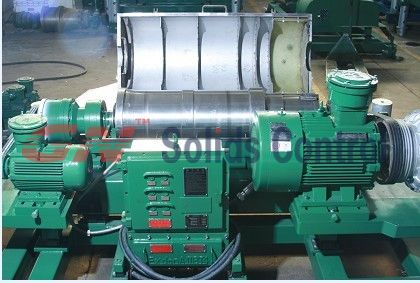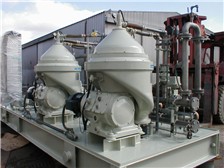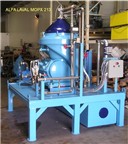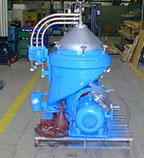Chromatography is a technique of chemical analysis that makes the separation of the components of a mixture possible, depending on their different affinity for two different phases, usually, a liquid or a gas and an adsorbing solid, respectively named "eluting phase" and "stationary phase". It was invented by the Russian botanic M. Tswett (1872-1919) who used it for the separation of pigments from plants, basing on their different coloured bands. These colours inspired the name "chromatography" derived from the Greek "chromos" = "colour" and "graphos" = "writing".
- How it works
In the classic "column-chromatography", the mixture is placed normally on the top of a long vertical glass column filled with a fine granular material like alumina (Al2O3) and silica (SiO2) or one among the many polymeric fine particles featured by polar or non-polar functional groups on their surface. The first two are highly polar phases for the presence of many hydroxyl groups -OH.
Through the column, a continuous flow of the eluting phase passes and drags with it all the components of the mixture. These are differently retained by the stationary phase by means of intermolecular forces depending on their affinity with it. This allows their separation along the column. If the compounds are coloured, the column appears divided into bands of different colours that form the "chromatogram".
- Chromatographic methods
There are several chromatographic methods that differ for the different type and shape of the instruments or for the chemical-physical features of the two phases. So, in "gas-chromatography" (GC), the mobile phase is a gas that separates the vapourised sample along a very long capillary column (from 10 to 100 m). In "liquid-phase chromatography", the eluting phase is a pure solvent or a mixture of solvents.
- Chemical-physical mechanisms
The physical mechanisms that allow the distribution of the sample between the stationary and the eluting phases are at the base of different types of separations:
a) Adsorption c. : when the sample is adsorbed on the very wide surface offered by the stationary phase.
b) Partition c. : the main techniques using it are GC and HPLC (when the eluting phase is liquid at high pressure). The samples are differently dissolved by two different phases.
c) Ionic exchange c. : when the stationary phase contains active groups able to selectively exchange some ions with the sample (ion exchange chromatography).source: www.helium.com












